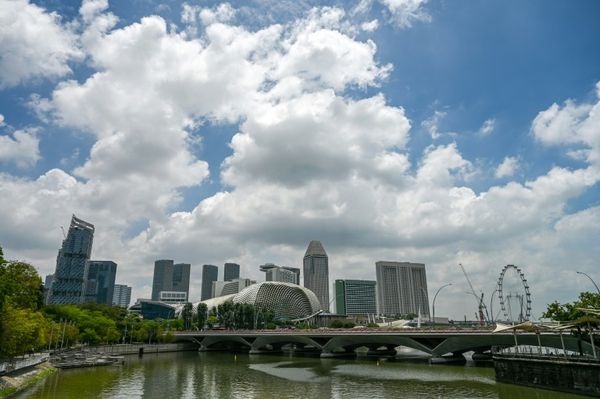
The federal government has set a target of building 1.2m new homes in Australia by 2029.
If we construct these homes the same way as we do today, their materials will contribute to millions of tonnes of greenhouse gas emissions, while our poorly performing existing homes will remain freezing in the winter. We need to change the way we design, build and retrofit housing to avoid a climate catastrophe.
Buildings contribute to the climate crisis in two main ways. There’s “operating carbon”. This is the greenhouses gases emitted from heating, cooling, lighting and day-to-day electricity use. In Australia heating and cooling are regulated by the nationwide house energy rating scheme, which provides a rating ranging from zero to 10 stars based on a home’s energy efficiency. The minimum performance required for new homes has increased from six to seven stars, which should reduce their heating and cooling energy by about 24%.
This is great for new homes, but the average existing home built before 2003 languishes at a lowly 1.8 stars, meaning they’re freezing in the winter, overheat in the summer and suffer from sky-high utility bills.
But there’s also “embodied carbon”. This is the emissions caused by manufacturing the materials we use to build homes, and the construction process itself. These are not regulated by the building code in Australia and can effectively be as high as you like.
The consequence of not regulating embodied carbon means it makes a large impact on our national emissions. A typical detached home in Australia releases about 118 to 158 tonnes of embodied carbon to get built in the first place. Multiply this over 1.2m new homes and it becomes a whopping 142m to 190m tonnes of greenhouse gas emissions over the next five years. This is comparable to the emissions of all the cars on our roads over the same period (215m tonnes).
The good news is that our regulations are slowly catching up. In New South Wales the sustainable buildings state environment planning policy now at least requires the measurement of embodied carbon in every new building. But we still lag behind world leaders such as France and Denmark where limits are imposed on embodied carbon for all new housing. In France these limits step down every three years, ensuring more ambitious reductions as the industry upskills. This has ushered in a dramatic shift in design and construction trends, with whole new districts being built from timber, schools with low-carbon straw facades and far greater reuse of buildings and materials than we see here in Australia.
It’s clear then that we must regulate embodied carbon. But there are three approaches beyond this that we can use to reduce its impact in housing.
1. Go smaller
We could consider building fewer, or smaller, homes. This is perhaps controversial, especially in a housing crisis. But Australia has some of the largest homes in the world, and building more compact dwellings would be an easy route to reducing materials, embodied carbon and costs. It would also make them cheaper, and easier to heat in the winter.
2. Make use of what we have
We can better use the buildings we have. Our building industry is incredibly wasteful, with about 20m tonnes of construction and demolition waste produced each year, of which more than 7m tonnes goes to landfill.
In Melbourne plans to demolish and replace 44 mid-20th-century public housing towers have been widely criticised due to the waste of materials, and the impact on established communities who live there.
Compare this to Glasgow, where three 1960s high-rise blocks have been renovated to “Passivhaus standard”, with triple-glazing and new insulation. This reduces embodied carbon by retaining the underlying concrete structure, but also means it’s much warmer for residents in the winter months, with one even claiming this has meant heating hasn’t been needed in their flat for two years! Rolling out an ambitious retrofit plan of Australia’s existing homes is just as important as building new ones.
3. Switch up the materials
We can reconsider the materials we use to build our homes. Concrete and steel are vital ingredients in most buildings but they are carbon intensive. Together they account for about 15% of all global greenhouse gas emissions. Fortunately we have some great low-carbon alternatives – timber, stone, rammed earth and bamboo.
While some of the tallest timber buildings in the world are proposed for Australia, wood isn’t being used nearly enough on the more common low- to mid-rise apartments we so desperately need, where carbon-intensive concrete remains king. Research from the University of NSW has shown that replacing concrete and steel with timber in 30% of new multi-storey buildings would help us get towards net zero carbon across the Australian built environment by 2050.
Solid stone can also support multi-storey buildings such as apartments, with a far lower embodied carbon toll than concrete. Examples include the eight-storey social housing apartments by Atelier Archiplein and Gilles Perraudin in Geneva, built from 6,975 stone blocks.
We also need to use existing building materials in more innovative ways. At the Resource Rows housing project in Copenhagen exterior walls are clad in a patchwork of 1 metre by 1 metre recycled brick panels. These were cut directly out of the walls of nearby abandoned industrial buildings with an angle grinder, as the mortar was too strong to recycle the individual bricks.
Our building industry is facing twin crises in housing and climate. This creates a conundrum – how can we possibly build for more, while using less? The good news is the ideas, materials and technologies exist for us to achieve this without trashing the environment. We just need to use them.
• Philip Oldfield is head of UNSW’s school of the built environment and a researcher in sustainable and low-carbon architecture







